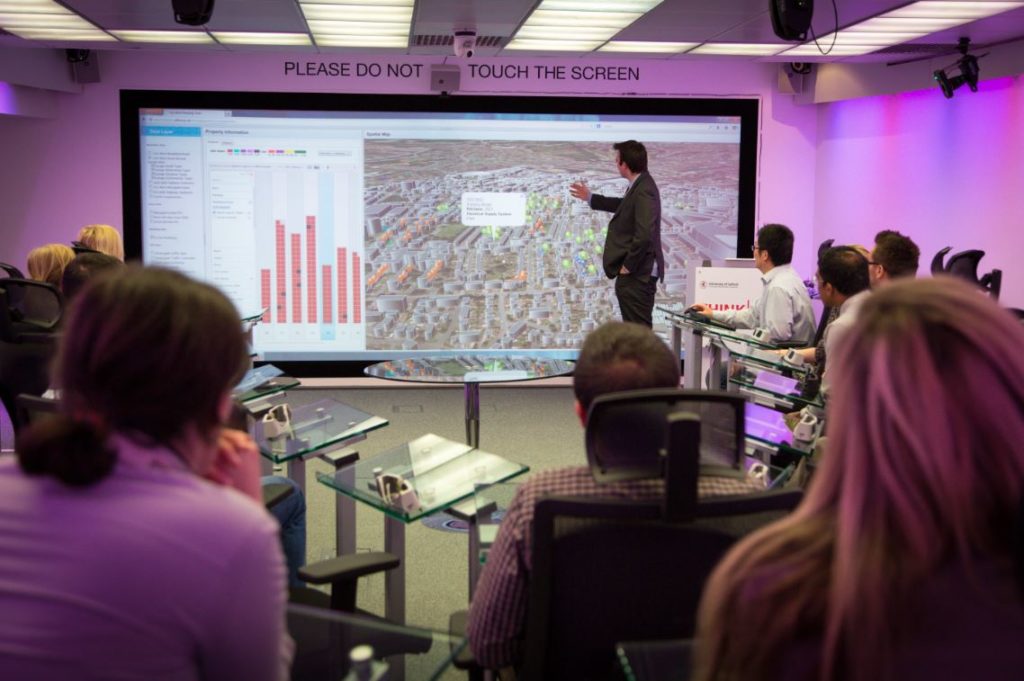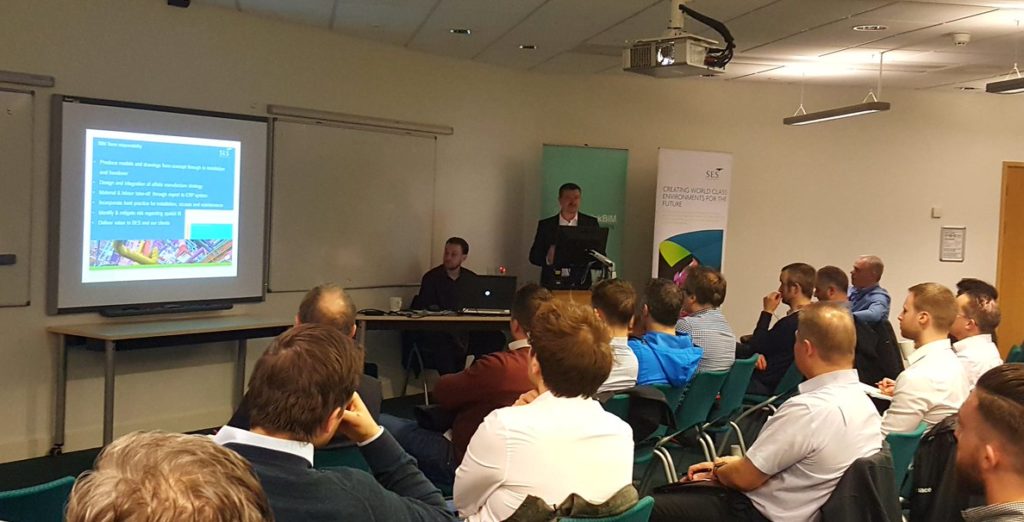#TBIM2013 Understanding Data for FM

Over 40 construction professionals gathered in the Rose Bowl in Leeds last night for what was a great event as part of thinkBIM’s summer BIM Operation and Maintenance series. Once more thinkBIM brought honest open, valuable lessons learnt in collaborative BIM to our members, demonstrating benefits that are being realised and ways of overcoming cultural barriers to change and make things happen……
Liam Brady of Manchester City Council opened the evening taking our group through the Manchester Town Hall Complex project, using excellent quotes and analogies along the way. Tom Oulton, our YH BIM Champion, shared his BIM journey so far at East Riding of Yorkshire Council with statement images, humorous analogies and open lessons learnt of the progress he has driven at the Council, Rob Jackson was our final presenter taking us quickly into the realm of Data and IFCs
Liam started out highlighting where BIM benefits are currently being reaped in the design and construction phases of the Manchester Town Hall complex, also outlining the potential benefits of BIM as a real driver for them to engage FM and attain the bigger benefits of BIM. The old Town Hall, Town Hall extension and Central Library will be run as one complex. A huge undertaking for a sector who have historically poorly maintained asset information. Liam focused on how to actually capture the information taking us to the Cabinet Office ‘BIM on a page’ slide, indicating client requirements and BIMExecution Plans to identify what is needed at all the stages of the construction process. For the project in question BIM wasn’t mandatory but was being tested within a strong framework of partners with cabinet office support. Liam took us through the process of extracting data out of the model via Artra which is then fed into the estate management package, C Pad, creating an accurate repository of information. Underpinning this process was the need to embed the FM team within the design process. This empowered the FM team to influence design and enabled the design team to be constantly thinking about the operational implications of their design decisions. Liam described this as the ‘Cultural Mesh’; communicating to and engaging the FM teams was brought about by breaking the model down by individual systems, i.e. water sprinkler system, breaking down into systems means you can go right into the information of lifecycle service requirements and supply chain details. Without buy in to update the data in the model the data would be worthless, this was the biggest risk and so the responsibility to update lies with the FM service provider, if they don’t update, they don’t get paid.
The Town Hall Complex project has also been a pilot for soft landings which has enabled the sharing risks and responsibility and not stopped the handover arguments but it has shifted the focus of arguments from blame to solutions. Again key to its success has been engaging the full decision making group. Liam closed his presentation stressing the importance of collaborating and sharing information in order to progress in BIM and identified exciting new opportunities for BIM use on their project.
Next up, Tom Oulton spoke of how he had spent too long at the coal face of CAD, waiting for BIM to happen. Tom has now emerged from his CAD cocoon into a beautiful BIM Butterfly. Tom took us through a delightful, honest and open account of his personal ‘Battle for BIM’ and how he has managed to make it happen with limited resources and enthusiasm in the East Riding of Yorkshire Council. Tom advocated REVIT saying ‘we use it, we like it, it is doing everything we need it to do’.
Tom poetically took us through the barriers of the fear of change; the huge learning curve that people initially were not keen to embark on. The need for buy in form all parts of the organisation not just the designers and engineers but also senior management and procurement was stressed in order to enable he changes needed to make the design teams BIM enabled. Using the Monty Python analogy of ‘so, what has BIM ever done for us?’, Tom was able to show detailed progress of use of revit by the council for Beverley highways, accurately model the sanitation and drainage and design work on the fire station project for Humberside Fire and Rescue all done in house and all coordinated via navisworks. Tom highlighted the benefits of BIM on a variety of projects from Schools through to multi purpose service centres. Benefits for the Multi Purpose Facilities have been the optioneering. Tom conclude with the comment that BIM has brought PEACE for the time being, FM will be the next Battle
Last but by no means least was a techy, nitty-gritty presentation from Rob Jackson of Bond Bryan, the passionate advocate for openBIM as industry wide standards. He took us through an abridged version of his sellout BIMShow live presentation ‘The Good, The Bad and The Ugly’.
Rob started with their frustration of the need to demonstrate we can deliver data to FM and clients, emphasizing that to get to FM, we need to understand the beginning bits of the process. Key to this process is creating reliable and useful models in terms of both geometry and data. Rob’s passion for reliable data exchange and IFCs in order to deliver projects came across, encouraging us to look at IFC for Level 2 delivery.
Rob stressed the importance in both importing and exporting between software solutions highlighting that Bond Bryan as a practise, although ArchiCAD users, have bought both Revit and Navisworks so that they can test and deliver models as per client requests. Rob’s message was clear and strong regarding the need for the construction sector as software vendor clients to push for improvements in interoperability. There is a lot of talk about IFCs not working when often it is user error or indeed modeling in different ways in different softwares. Rob took us through the detailed tests he has been carrying out between a variety of softwares, findings of which he is currently sharing with software vendors to enable changes and improvements. Often when we think of interoperability it is presumed we are discussing problems between different software vendors but in fact, Rob indicated that there are even problems within softwares from the same manufacturer (i.e. two Autodesk products)… key is to test and pilot exchanges between softwares.
Rob brought his presentation to a close notifying us all of the positive feedback he has recently had from Autodesk, indicating that indeed the customers have not been asking the right questions and making a plea for all to push vendors to improve as being able to work in different software environments is important.
A lively Q and A focused on People as the main barrier to effective adoption and implementation of BIM within organisations and the need to present the benefits to all; questions on interoperability highlighted the need to test and push software companies to make things work especially on the FM side to set the agenda.


